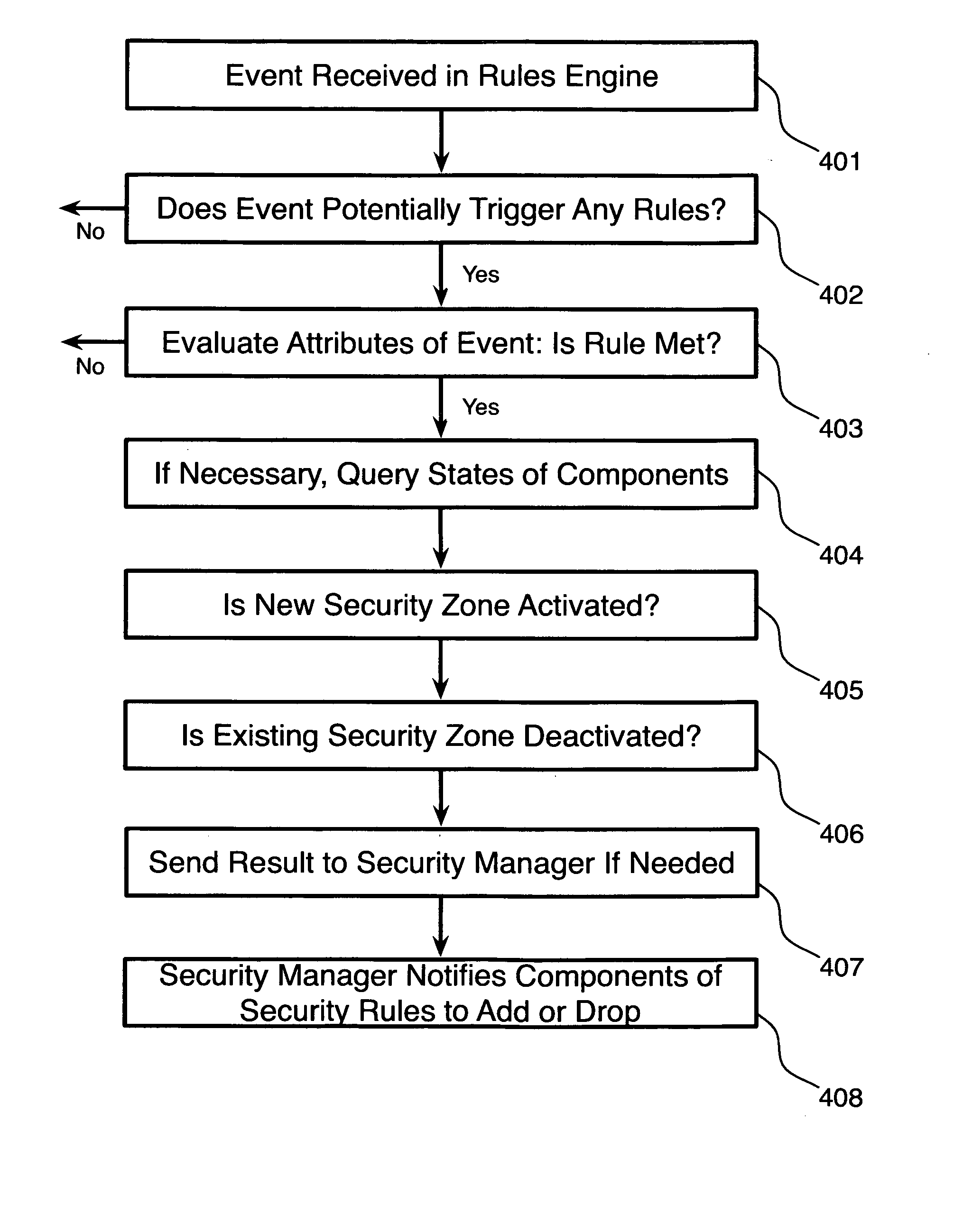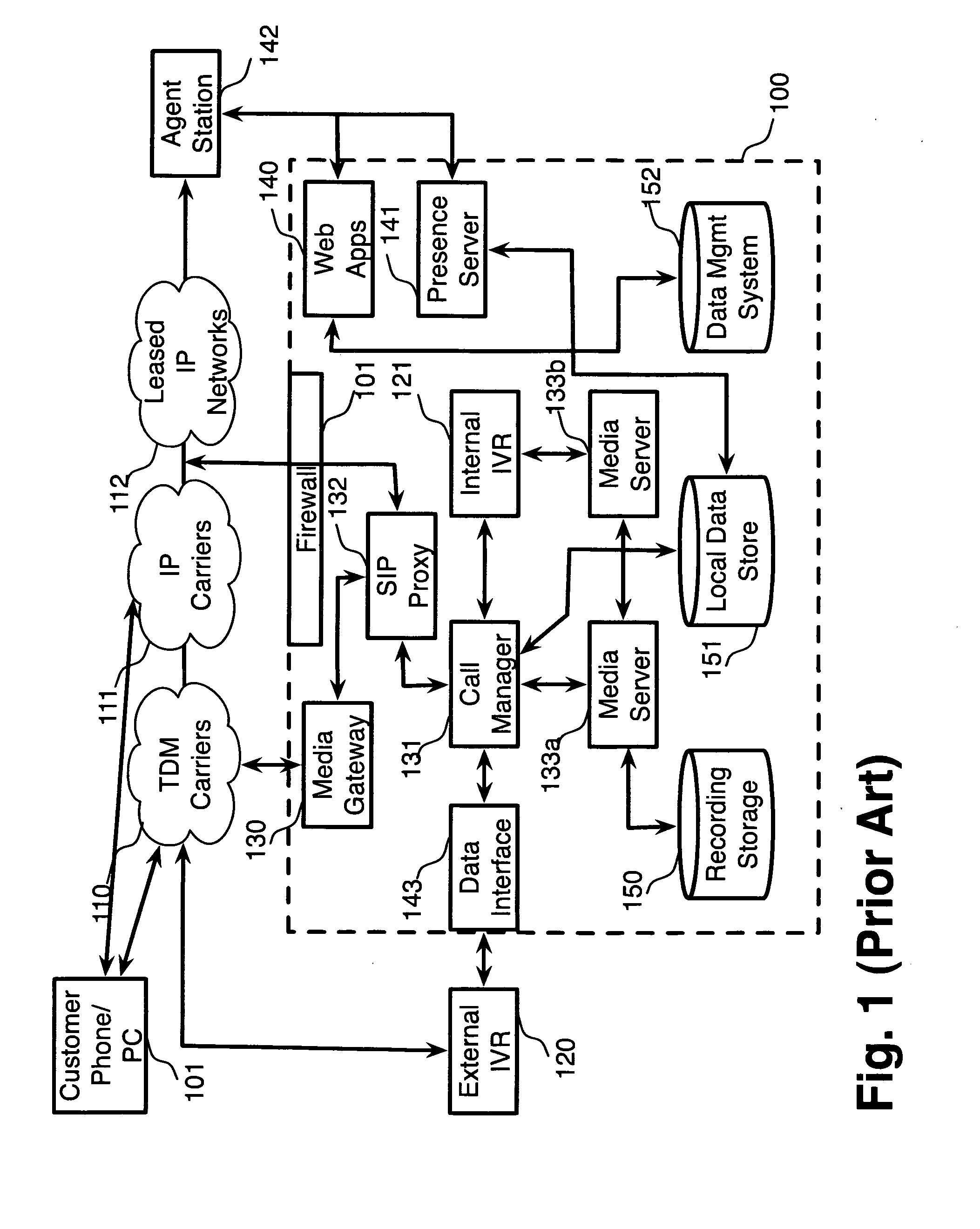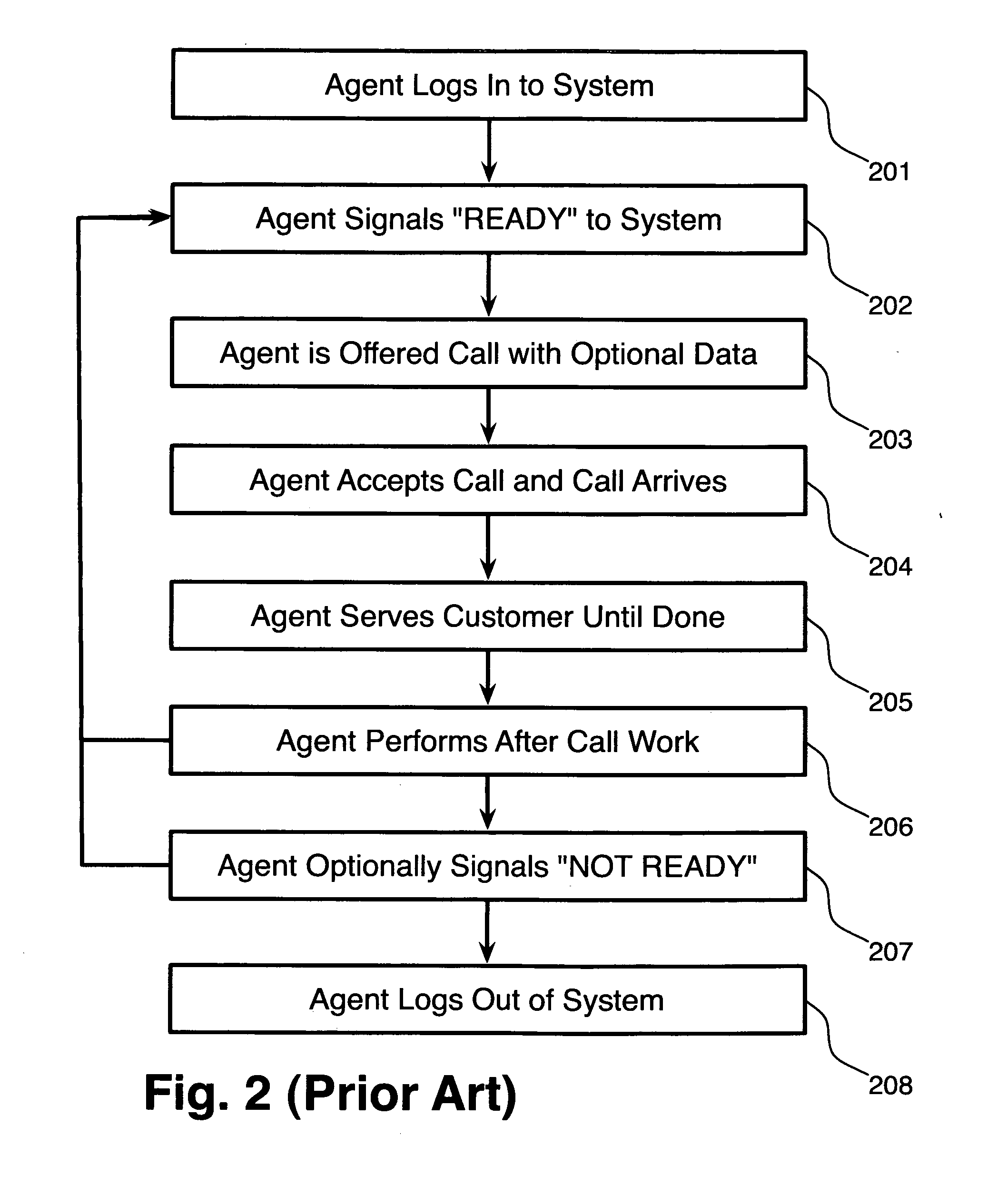System and method for implementing adaptive security zones
a security zone and adaptive technology, applied in the field of information security, can solve the problems of low computer technology of employees, no small, easily-concealed devices capable of storing large amounts of data, and no home computer access for employees,
- Summary
- Abstract
- Description
- Claims
- Application Information
AI Technical Summary
Problems solved by technology
Method used
Image
Examples
Embodiment Construction
[0029]The inventors provide, in a preferred embodiment of the invention, a system and methods for implementing adaptive security zones. A “security zone” is a region, in space or time (or both), in which a specified set of security rules are implemented or enforced. Regions can be defined in space by reference to organizational structures or their associated infrastructure elements, such as “all desktops operated by home agents” or “all servers within a given site”, or even, “those portions of an agent's desktop video display that are under the control of applications managed by our company”, and the like. Regions can also be defined in space by reference to data elements or media streams stored or operating at particular locations in an electronic computer or on a particular data or telecommunications network, for example “the audio streams for all call legs originating from an agent's phone”, or “all call recordings stored in a particular vaulted storage facility”. Regions can be ...
PUM
 Login to View More
Login to View More Abstract
Description
Claims
Application Information
 Login to View More
Login to View More - R&D
- Intellectual Property
- Life Sciences
- Materials
- Tech Scout
- Unparalleled Data Quality
- Higher Quality Content
- 60% Fewer Hallucinations
Browse by: Latest US Patents, China's latest patents, Technical Efficacy Thesaurus, Application Domain, Technology Topic, Popular Technical Reports.
© 2025 PatSnap. All rights reserved.Legal|Privacy policy|Modern Slavery Act Transparency Statement|Sitemap|About US| Contact US: help@patsnap.com



